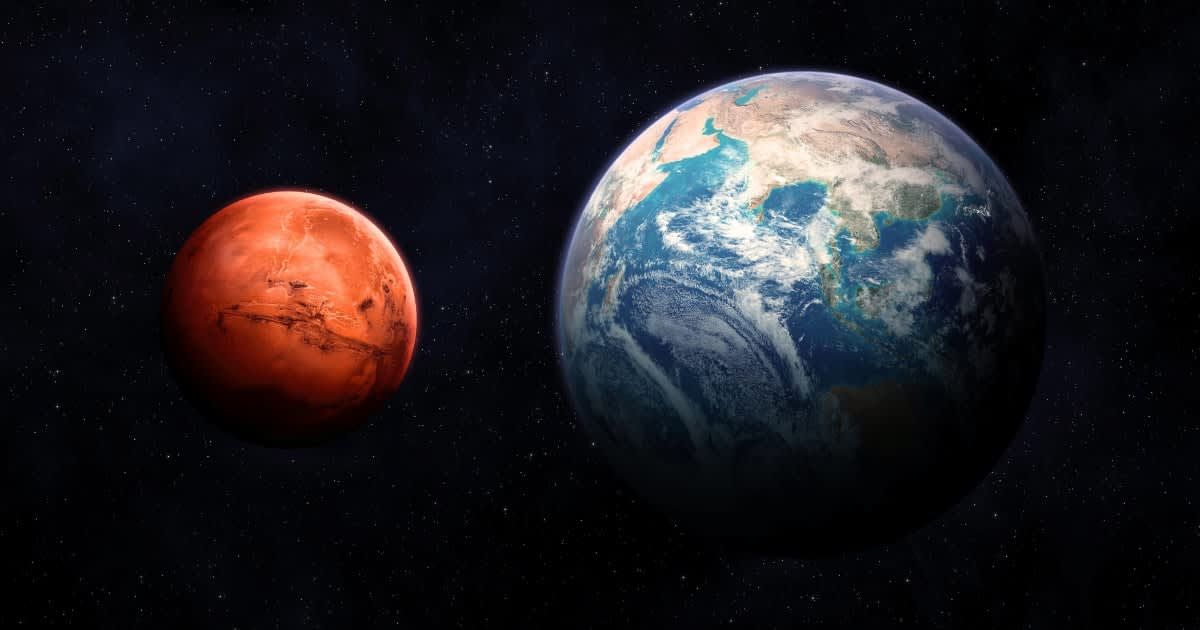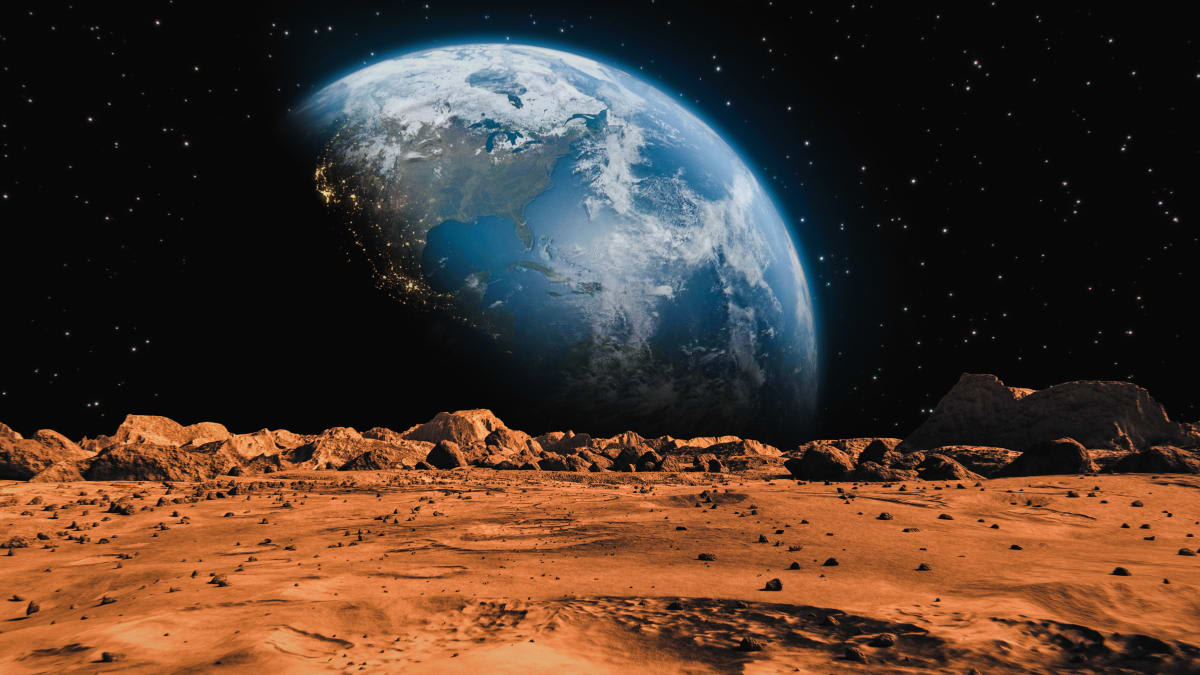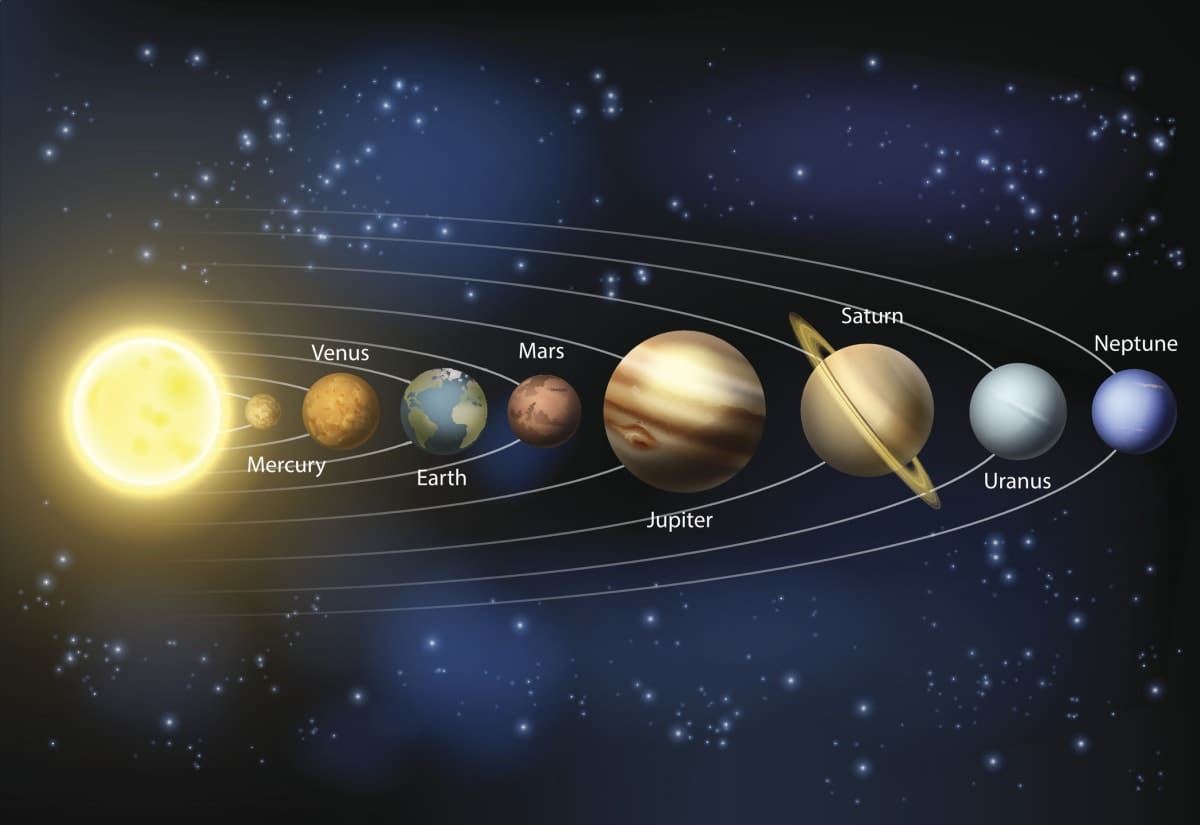How far away is Mars

How far away is Mars now?
Distance Last Updated: Today
2025-Dec-22, the distance between Mars and Earth is {3.6165939164×10⁸} kms, with a range-rate of {-0.9910721} km/s, indicating that Mars is moving slightly closer to Earth at that moment.

Where does this distance data come from?
I source Mars's distance from Earth via the Horizon JPL API. It is a free service provided by NASA's Jet Propulsion Laboratory (JPL) that offers access to ephemeris (positional) data and related information for celestial bodies, such as planets, asteroids, and comets. The system can be accessed through various interfaces, including a web interface, a telnet interface, and an email interface. This API contains the precise distance between Mars and Earth for each day of the next few hundred years. So, I simply created a system to check for today's date, then go retrieve the accurate distance value directly from NASA's database. The up-to-date value is then displayed on this page.
How do scientists calculate live distance between Mars and Earth?
Scientists calculate live distance between Mars and Earth using a combination of mathematics, astronomical data, and the principles of celestial mechanics. The positions of Earth and Mars in their respective orbits are constantly changing due to their elliptical orbits and different orbital periods around the Sun.

Mars's orbital parameters
Orbital parameters describe the way objects move around in space, such as planets, moons, or satellites. These parameters include the size, shape, and tilt of the orbit, as well as the object's position and speed within the orbit. They help scientists understand and predict the paths of celestial bodies, which is crucial for planning space missions, observing astronomical phenomena, and monitoring satellites.
- Semimajor axis: The average distance from the center of a celestial body to the center of its orbiting object (e.g., the Sun). Mars (227.956 million km) is 1.524 times farther from the Sun than Earth.
- Sidereal orbit period: The time it takes for a planet to complete one full orbit around the Sun relative to the fixed stars. Mars (686.980 days) takes 1.881 times longer than Earth.
- Tropical orbit period: The time it takes for a planet to complete one full orbit relative to the vernal equinox. Mars (686.973 days) has a ratio of 1.881 compared to Earth.
- Perihelion: The closest distance a planet gets to the Sun in its orbit. Mars (206.650 million km) gets 1.405 times closer to the Sun than Earth at its closest approach.
- Aphelion: The farthest distance a planet gets from the Sun in its orbit. Mars (249.261 million km) gets 1.639 times farther from the Sun than Earth at its farthest point.
- Synodic period: The time it takes for a planet to return to the same position relative to the Sun, as seen from Earth. (779.94 days).
- Mean orbital velocity: The average speed of a planet as it orbits the Sun. Mars' mean orbital velocity (24.08 km/s) is 0.809 times that of Earth.
- Max. orbital velocity: The highest speed of a planet in its orbit. Mars reaches a maximum speed (26.50 km/s) of 0.875 times that of Earth.
- Min. orbital velocity: The lowest speed of a planet in its orbit. Mars reaches a minimum speed (21.97 km/s) of 0.750 times that of Earth.
- Orbit inclination: The angle between a planet's orbital plane and the ecliptic plane. Mars' orbit is inclined 1.848 degrees relative to Earth's orbit.
- Orbit eccentricity: A measure of how much a planet's orbit deviates from a perfect circle. Mars' orbit (0.0935) is 5.599 times more eccentric than Earth's.
- Sidereal rotation period: The time it takes for a planet to complete one full rotation relative to the fixed stars. Mars (24.6229 hours) takes 1.029 times longer than Earth.
- Length of day: The time it takes for a planet to complete one full rotation relative to the Sun. A Martian day (sol) (24.6597 hours) is 1.027 times longer than an Earth day.
- Obliquity to orbit: The angle between a planet's equatorial plane and its orbital plane. Mars (25.19 degrees) has a slightly larger axial tilt (1.075 times) compared to Earth.
- Inclination of equator: This parameter is the same as obliquity to orbit, as both refer to the axial tilt of a planet. Mars (25.19 degrees) has a 1.075 times larger tilt compared to Earth.

Mars at opposition (list for the next 30 years)
Mars at opposition means that Mars, Earth, and the Sun are aligned in a straight line, with Earth in the middle. During this time, Mars appears brighter and larger in the sky because it's at its closest point to Earth in its orbit. This planetary opposition occurs roughly every 26 months, providing astronomers and stargazers with an excellent opportunity to observe and study the Red Planet. Below you can find a list of opposition dates for the next 30 years:
| Date | AU | Kilometers | Miles | Mag |
|---|---|---|---|---|
| 2025-01-16 | 0.643642 | 96,288,000 | 59,841,651 | -1.4 |
| 2027-02-19 | 0.677933 | 101,417,000 | 63,020,604 | -1.2 |
| 2029-03-25 | 0.649114 | 97,106,000 | 60,315,530 | -1.3 |
| 2031-05-04 | 0.558906 | 83,611,000 | 51,938,728 | -1.8 |
| 2033-06-27 | 0.427318 | 63,926,000 | 39,732,819 | -2.5 |
| 2035-09-15 | 0.381637 | 57,092,000 | 35,452,605 | -2.8 |
| 2037-11-19 | 0.499541 | 74,730,000 | 46,447,496 | -2.2 |
| 2040-01-02 | 0.613644 | 91,800,000 | 57,038,690 | -1.5 |
| 2042-02-06 | 0.671898 | 100,515,000 | 62,435,328 | -1.2 |
| 2044-03-11 | 0.667906 | 99,917,000 | 62,076,925 | -1.3 |
| 2046-04-17 | 0.601271 | 89,949,000 | 55,878,814 | -1.6 |
| 2048-06-03 | 0.479820 | 71,780,000 | 44,610,871 | -2.2 |
| 2050-08-14 | 0.374148 | 55,972,000 | 34,755,685 | -2.9 |
| 2052-10-28 | 0.446504 | 66,796,000 | 41,518,037 | -2.5 |
| 2054-12-17 | 0.574444 | 85,936,000 | 53,407,392 | -1.7 |
| 2057-01-24 | 0.656310 | 98,183,000 | 60,986,464 | -1.3 |
| 2059-02-27 | 0.676988 | 101,276,000 | 62,897,088 | -1.2 |
Just for fun, how long would it take to reach Mars via different transportation means
The average distance between Earth and Mars is 140 million miles (225 million km), so based on that distance, I have calculated the time it would take to reach the red planet at the speed of different means of transportation.
- On foot (3 mph): Approximately 5,333.33 years
- Bicycle (15 mph): Approximately 1,066.67 years
- Horse (galloping at 25 mph): Approximately 638.89 years
- Motorbike (average speed of 70 mph): Approximately 228.31 years
- Boat (cruising speed of 20 knots): Approximately 694.64 years
- Car (60 mph): Approximately 266.67 years
- High-speed train (200 mph): Approximately 79.92 years
- Commercial airplane (575 mph): Approximately 27.79 years
- Concorde supersonic jet (1,350 mph): Approximately 11.84 years
- SpaceX Starship (projected average speed of 16,777 mph): Approximately 0.95 years
Please bear in mind that when it comes to sending spacecraft to the red planet, scientists tend to choose the best window of opportunity. The best time to send a spacecraft to Mars is during a launch window called the "Mars opposition." During this time, the distance between the two planets is minimized, which reduces the travel time and fuel requirements for the spacecraft.
Bonus Fact: On average, it takes about 3-22 minutes (depending on the positions of Mars and Earth in their respective orbits) for light from Mars to reach Earth.
How far away are the other planets of the solar system?
I have developed a webpage that monitors the real-time distances between Earth and each planet of the solar system (work in progress):
- Real-time distance between the Moon and Earth
- Real-time distance between Mercury and Earth
- Real-time distance between Venus and Earth
- Real-time distance between Jupiter and Earth
- Real-time distance between Saturn and Earth
- Real-time distance between Uranus and Earth
- Real-time distance between Neptune and Earth
- How Far Away Is Earth From The Sun?
Learn more about the Red Planet
This page is part of our collection of astronomy articles. If you enjoyed the read, then you'll love the following articles.

How long does it take to travel to the Red Planet?
There are many factors that can affect the duration of a journey to Mars, including the trajectory of the spacecraft, the speed of the spacecraft, and the position of Mars in its orbit around the Sun.
How to observe Mars with a telescope

Mars is among the most popular planets to observe in the night sky. Here are a few tips and tricks on observing Mars through a telescope.

How many rovers and landers are currently on Mars?
There are 3 rovers exploring and studying Mars inch by inch. These robotic vehicles are a vital part of space exploration.
Everything you need to know about the Mars rover mission
I have compiled 50 questions and answers about Perseverance, a remotely operated robotic vehicle designed to search for signs of ancient life on planet Mars.









